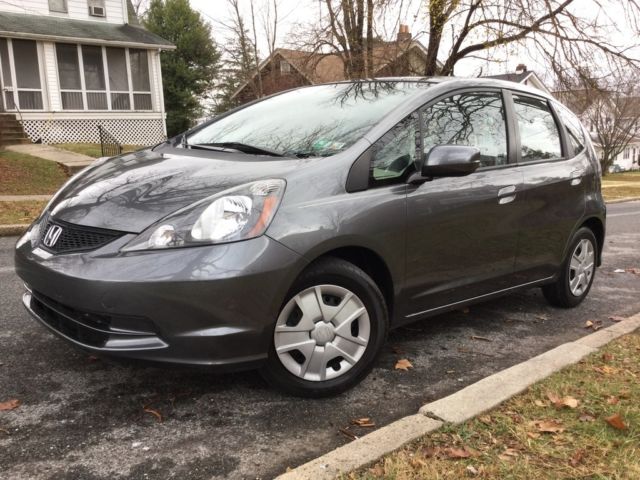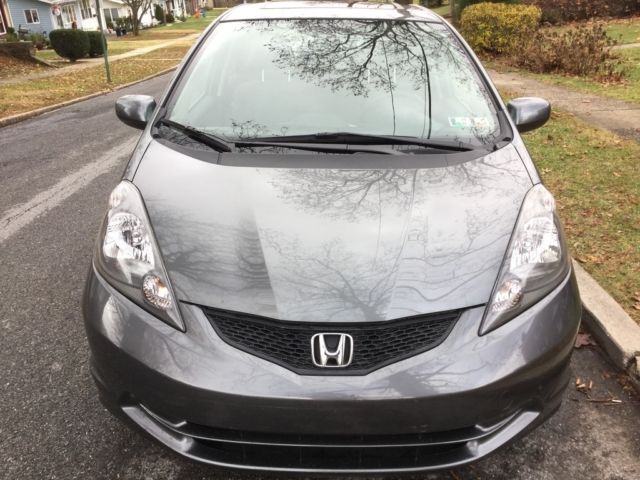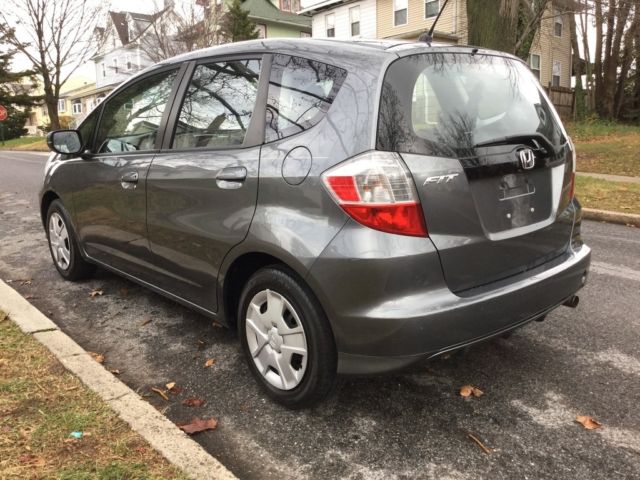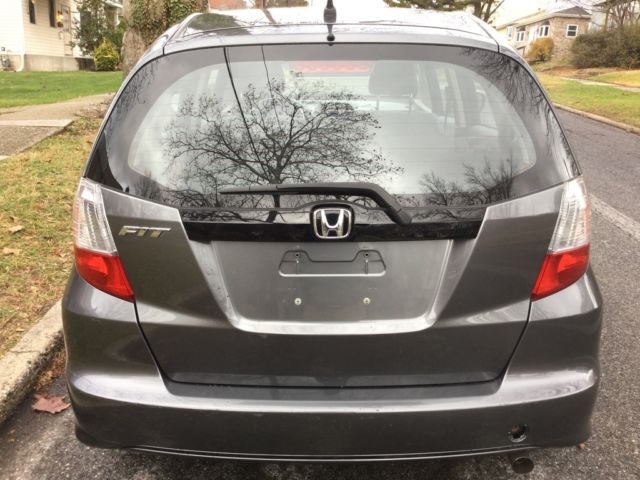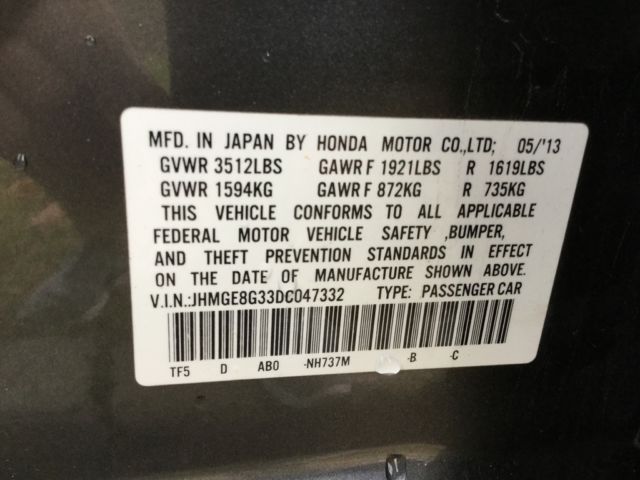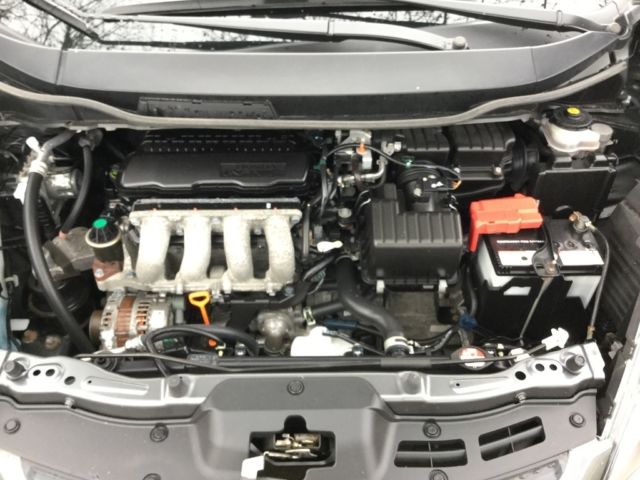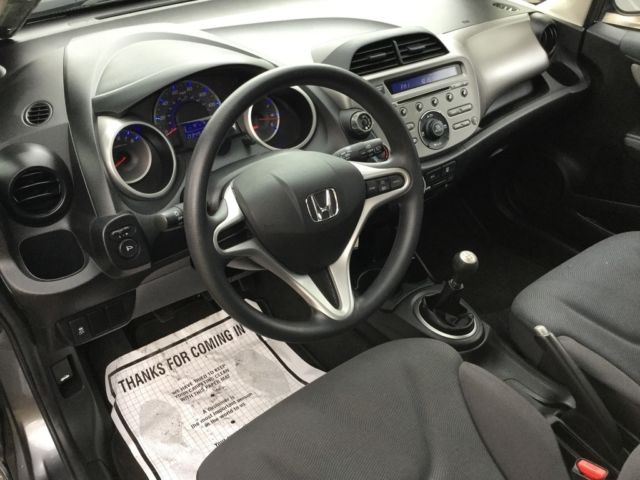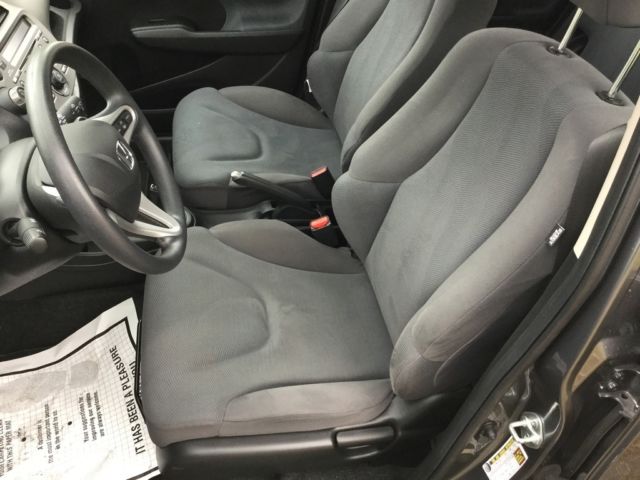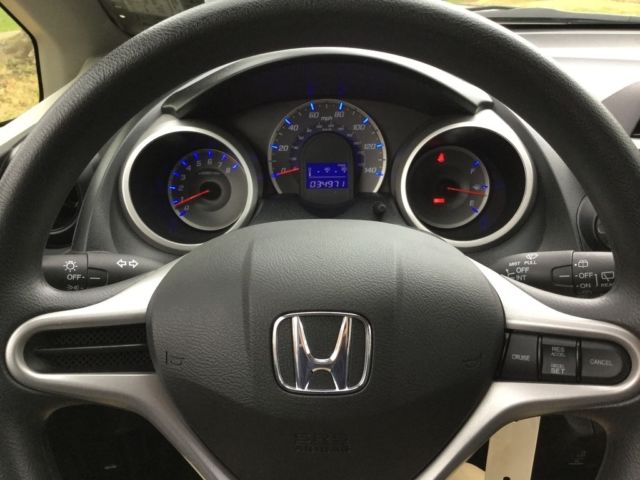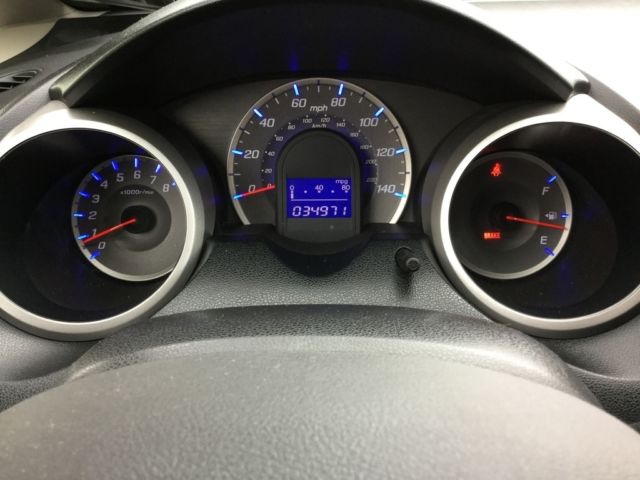2013 Used 1.5L I4 16V Manual 2WD Hatchback
- Condition: Used
- Make: Honda
- Model: Fit
- Type: Hatchback
- Trim: Clean CarFax - Like New - 1 Owner - 34k Miles
- Doors: 4 Doors
- Year: 2013
- Mileage: 34,971
- VIN: JHMGE8G33DC047332
- Color: Gray
- Engine size: 4-Cyl
- Number of cylinders: 4
- Fuel: Gasoline
- Transmission: Manual
- Drive type: 2WD
- Interior color: Gray
- Vehicle Title: Clear
- Interested?
2013 Honda Fit Clean CarFax - Like New - 1 Owner - 34k Miles Description
PLEASE DO NOT BID IF YOU ARE NOT SERIOUSLY INTERESTEDIN BUYING AND PAYING FOR THIS VEHICLE!Up for bid is a 2013 Honda Fit. Car is like new, only 34k miles, 1 owner, no accidents, good tires, 5spd manual, clutch and engine are perfect! Ready to drive today!!!
The Honda Fit is practical, economical, and roomy. It's also the most enjoyable to drive of the subcompacts.
New for 2013 the Fit EV electric vehicle joins the lineup. Otherwise, the Fit carries into the 2013 model year unchanged. The current-generation Fit was launched as a 2009 model, and the styling was revised for 2012.
Honda Fit's 1.5-liter engine is smooth and powerful, impressive for an engine that small. It's rated at 117 horsepower at a high-revving 6600 rpm, with 106 foot-pounds of torque at 4800 rpm. Yet there's always sufficient torque, that force that propels you from intersections and up hills.
Mated to a 5-speed automatic transmission with paddle shifters, it's an exceptional powertrain. The Honda automatic has a Sport mode that holds the transmission in gears longer when you're in Drive, and not using the paddles for manual shifting. This Sport mode is meant for sports car-like driving, which the Fit likes. The 5-speed manual gearbox, meanwhile, is tight and fun, with a clutch that's easy to use. We recommend it for driving enthusiasts. All models come with Vehicle Stability Assist (VSA).
Fuel mileage for the 2013 Honda Fit is EPA-rated at 28/35 mpg City/Highway with the 5-speed automatic, or 27/33 mpg with the 5-speed manual.
Underway, the Honda Fit feels like a bigger car, partly because the dashboard is long, to accommodate the raked windshield, and partly because there's so much legroom in the front, again thanks to that rake. Thanks to the expansive greenhouse and big mirrors, there's excellent visibility in all directions, including out the vertical and unobstructed rear glass.
With its wedge-shaped front end, the Fit has a presence that reaches beyond its subcompact status. Its size is just right for many drivers. It's easy to park and maneuver and inside is an amazingly configurable interior, helped by what Honda calls the Magic Seat. The second row of seats can be folded and flattened for carrying cargo, and the front passenger seat slides way forward and reclines way back, creating a long space from dashboard to liftgate that can hold a kayak.
The black cloth seats are wonderful, upholstered in a smooth comfortable material that's pleasing to the touch, and the bolstering is just right, with excellent cornering support. In fact, the seats would work in a sports car. Lots of cubbies and cupholders make everyday driving convenient. Rear legroom is roomier than that of the Toyota Yaris, Mazda2, and Ford Fiesta.
The Fit is relatively expensive among subcompacts. It's the best driver's car among these, so if you're a driving enthusiast, the Fit is the best choice. However, if purchase price is more important, then you should compare prices, features and equipment with the Mazda2, Ford Fiesta and Nissan Versa.
New to the Fit lineup for 2013 is the all-electric Fit EV. We found the 2013 Fit EV fizzy, fun and fast. But it's not available in most of the country. In fact, even in California and Oregon, the only states where the car is being marketed to date, it can only be leased, at a price of $389 per month over a three-year term, which computes to a Manufacturer's Suggested Retail Price (MSRP) of $36,625. Honda plans to lease only about 1,100 pearl-blue EVs through 2014, so you may not even be able to get one, although that could change. Availability will expand to the East Coast in early 2013, the company says.
With its wedge-shaped front end, the Honda Fit has a presence that reaches beyond its subcompact status. It wears red well, and is especially eye-catching and sporty in that color.
There's very little nose. What there is drops steeply from the A-pillars, which are raked radically down from the roof, hitting the fenders above the middle of the front tires. The roof has a very subtle arc, back to the small spoiler over the rear window on the Sport model, and again the lines speak a graceful language. The window outline is like an elongated horizontal teardrop.
The sides are a bit blocky, and the rear a lot blocky. Sills on the Sport make it look almost too low, and make the 16-inch wheels look small. The ground clearance is zilch, something to keep in mind over sharp driveway transitions and in snow.
Viewed head-on, all the angles are directed inward. The headlights have sharp inside points like exotic eyes, beginning just under the upper sharp corners of the tidy classy grille; on Sport models the horizontal air intake below the bumper stretches outward at the bottom corners, to balance the grille.
Honda calls the Fit a five-door, and not a hatchback. While Europeans love them, Americans generally don't like the idea of hatchbacks, although we detect those attitudes may be mellowing.
From the front three-quarter view, the Fit is more striking than the Ford Fiesta, Mazda2 and Toyota Yaris because of the sharpness of the nose and the mini-wagon body shape. It doesn't have their roundness, and looks more like a tiny wagon than a five-door. It has a wide low stance, slight fender flares and sharp character lines along the sides. Also competing in this class are the Scion xD and Kia Soul, boxy, tall subcompacts.
From the rear, the Fit's liftgate is like that of a mini SUV.
The chassis structure, called ACE (Advanced Compatibility Engineering), is designed to enhance crash integrity. The frame rails are polygon-shaped and computer designed to disperse the forces of crash impact all around the car, upward and downward, instead of allowing them to be jammed at the occupants. The bowed crossmember under the dashboard plays a role. The bumper and sheetmetal forward of the windshield are built to bend and absorb, reducing damage to things you might hit, namely pedestrians.
Compact outside, the Honda Fit is roomy inside. From the driver's seat, it feels like a bigger car than it is. That's due partly to space efficiency, partly to the raked windshield and deep dashboard, partly to the acres of legroom.
The black cloth seats that come standard are wonderful. It's a smooth comfortable material that's pleasing to the touch, and the bolstering is just right, with excellent cornering support. They'd work in a sports car.
Thanks to the expansive greenhouse and big mirrors, there's excellent visibility in all directions, including out the vertical and unobstructed rear glass. But especially through the large windshield. With so little distance between the bottom of the A-pillar and the front bumper, and with that sloped nose, the driver can't see the front corners of the car, but bumping into things is unlikely because the distance to them is so short.
The A-pillar was made especially thin, and those triangular windows just behind the A pillar are as big as possible, largely for driving in Japan, with all its tight spaces and pedestrian crosswalks. But that big windshield is nice here in America, too. We drove one long afternoon for about 200 interstate miles in the rain and drizzle, and with strong wipers and that big windshield, our broad visibility made us more relaxed and safer.
The little things have been well thought out, including molding cubby holes into the plastic at almost every opportunity, from thin slots about the size of a deck of cards, located behind the e-brake lever between the seats; to cupholders on the far left and right of the dashboard. There are also two cupholders forward of the shift lever on the floor, and two more for the rear seat passengers. And two gloveboxes, enabling cleaner organization.
There are comfortable usable armrests on the front doors for the driver and passenger, and flip-up armrests between the front seats. The center stack offers three big foolproof knobs for climate control; it doesn't get any simpler than that and it's a relief.
The plastic and trim materials feel like they belong on a $15,000 car, where they are. However the perforated leather steering wheel in the Sport feels like it belongs on a $19,000 car, where it is. Its controls include audio, cruise and voice command. The paddles for the automatic transmission fit the fingers very nicely, no bigger than necessary, something you can't say about a lot of high-performance cars that have them.
Honda has added a dash of class to the Sport. The instrumentation itself remains basic, with a digital display between in the center of the speedometer that shows odometer, trip odo, average mpg, and oil life. Unfortunately, the range, or DTE (distance to empty), is not included, and for the life of us, we can't imagine why. A Honda rep told us that oil life is a priority to Honda (if not so much owners), because there are so many Fits in rental car fleets, it's about mass maintenance.
The optional satellite-linked navigation system has also been redesigned. It now features 16GB of flash memory in place of the DVD-based system used previously. Honda promises simple, intuitive operation and an extensive on-board database.
In the EV model, navigation is standard, as are what Honda calls EV-centric gauges, which feature a state-of-charge indicator and a range meter. Also standard: automatic climate control with a digital readout, Bio Fabric seat covers made of a sugarcane-based material to avoid increasing the demand for corn.
Legroom in the rear is good, at 34.5 inches. Compare that to the all-new Toyota Yaris, 33.3 inches; Mazda2, 33.0 inches; and Ford Fiesta, 31.2 inches. None of these are anywhere near the Nissan Versa hatchback's 38.0 inches, but then the Versa hatch is 7.5 inches longer than the Fit.
The Honda Fit beats the Nissan Versa hatchback in overall cargo volume, however. With the rear seats folded, the Fit offers a humongous 57.8 cubic feet, to Versa's 50.4 cubic feet, with the other hatchback subcompacts far behind. (Those figures are for the 2012 Versa, not the 2014 Versa Note.)
Honda's Magic Seats move in a number of ways, from folding flat for utility to flipping up for tall objects. There's even a storage compartment under the seats for small items.
The 1.5-liter engine is very smooth and powerful, for an engine that small. It's rated at 117 horsepower at a high-revving 6600 rpm.
Mated to the 5-speed automatic transmission with paddle shifters, it's an exceptional powertrain. And the 5-speed manual gearbox is tight and fun, with a clutch that's easy to use.
We drove into a heavy headwind with the cruise control set at 72 mph in a Honda Fit automatic. On uphill stretches, the transmission shifted back and forth between 5th and 4th, and on steeper hills it kicked down to 3rd, but the shifts could not be felt, or even heard with the radio tuned to the news. We watched the tach jump, from 2600 rpm in 5th to 3100 in 4th to 4000 in 3rd, but never felt or heard the shifts. That's smooth. The automatic has a Sport mode that holds the transmission in gears longer when you're in Drive. This sport mode is meant for sports car-like driving, which the Fit likes. The driver can shift manually using paddles.
However that headwind caused the Fit to dance around on the road a lot, because it is so light, even though the aerodynamics are good.
The gas mileage was good at that pace. We started the trip at 25.8 miles per gallon from city driving, and it climbed to 30.5 mpg after 229 miles, despite sometimes pushing to 80 mph. The manual transmission Fit and Fit Sport with the automatic get an EPA-estimated 27/33 City/Highway mpg, while the base Fit automatic manages an even better 28/35 mpg rating.
The Honda Fit is nimble around town, making driving fun and relaxed. For everyday driving the Fit is obedient and comfortable, thanks to the great seats and a suspension that smoothes the ride.
The all-electric Honda Fit EV is, of course, a bit different from the other models. On the road, the Fit EV is really two cars in one: in Eco mode it conserves wattage and pretty much ambles along, a sedate statement of green consciousness. In Normal mode, acceleration and torque is sufficient for cruising and city driving. Punch in Sport mode and the lightweight Fit thrusts forward with a significant kick and the EV holds a head of steam that's more than enough to attack an incline or power up an interstate on-ramp.
The Fit EV draws its power from a 20-kilowatt hour, lithium-ion battery and a 92-kilowatt coaxial electric motor/gearbox. The high-density electric motor, similar to the unit that drives the FCX Clarity fuel cell electric vehicle, is highly efficient and ultra-silent; more than a couple of times we had to check the Ready to Drive readout on the dash panel to make sure that it was running and ready to engage.
The three-mode Dynamic Electric Drive system, with Eco, Normal and Sport buttons located to the left of the steering wheel, is lifted from the CRZ two-seater. As with the CRZ we drove some time ago, the Fit EV in Eco mode with the CVT continuously variable transmission labors when uphill thrust is required, and torque is limited. In Sport mode, the EV is positively fast, and, like most Fits, adept at handling corners and hunkering down on freeways. Sport mode reduced the range by about 20 percent in our testing.
When it comes time to recharge, the Fit EV owner should have a plan A, and a Plan B just to be safe and avoid range anxiety.
A 6.6 kW, onboard, 32-amp charger allows for convenient recharging of the Fit EV with a 240-volt circuit in less than three hours. Owners will want to equip their home with a 240-volt charging station. Honda has partnered with Leviton as the preferred Electric Vehicle Supply Equipment (EVSE) charging supplier.
When using 120-volt household current, be prepared to close the garage door and settle in for a long nap; a full recharge takes more than 10 hours, Honda says. In fact, we plugged the Fit into a 120-volt household line and five hours later, the range meter hadn't budged. The charger during that time appeared to be operating, as all the charge lights were green. You'll want that 240-volt charging system.
The Honda Fit offers a compelling balance of economy, fun, interior convenience and comfort. It delivers engineering excellence and value. From a healthy list of standard safety equipment to multiple seat configurations and ample storage room, the Fit simplifies your life. It's relatively pricey among subcompacts but it's more fun to drive and the interior is nicely designed and well thought out.
Please view all pictures astheyareapartof the description. This is an AS IS NO RESERVE AUCTION! High bidder wins and is REQUIRED toleavea non-refundabledeposit. Please feel free to contact us with anyquestionsyou may have. Good Luck and Happy bidding :)Successful high bidder should email dinocb@aol.comwithin 24 hours after the auction has ended to make arrangements to complete the transaction. All financial transactions should be in the form of cash or cashier's-check. Within 24 hours after the end of sale, winning bidder must submit 10% of the total cost of the sale. Balance is due within 4 days of the end of sale. We will store any vehicle for up to 10 days free of charge. A $220 processing fee will be added to the total value of the auction. This fee includes notary services, messenger, and title transfer.It is a fixed amount for any car-purchaser, and dealers are included.This fee is not negotiable.Please don't bid if funds are not available at the time of bidding. Pennsylvania buyers must pay sales tax and tag fees. Out-of-state buyers are responsible for their own taxes in their own states. Shipping?!? There are numerous reliable shipping companies that specialize in interstate vehicle shipment. Responsibility for shipping rests entirely with the buyer.
We Simply do not accept any bids from people who have Negative Feedbacks unless they have emailed us with a reasonable explanation. If an email is not returned, the negative feedback bidder will be retracted by the seller.
If you are new to eBay and your Feedback Rating is "0" ("Zero") - Meaning you have the number " 0 " to the left of your eBay user name! - You may not place a bid on our auctions UNLESS you do the following: Email us Your (FULL LEGAL NAME), (ADDRESS), AND (PHONE NUMBER).
email:dinocb@aol.com
AS IS - NO WARRANTY
This vehicle is being sold as is, where is with no warranty, expressed written or implied. The seller shall not be responsible for the correct description, authenticity, genuineness, or defects herein, and makes no warranty in connection therewith. No allowance or set aside will be made on account of any incorrectness, imperfection, defect or damage. Any descriptions or representations are for identification purposes only and are not to be construed as a warranty of any type. It is the responsibility of the buyer to have thoroughly inspected the vehicle, and to have satisfied himself or herself as to the condition and value and to bid based upon that judgment solely. The seller shall and will make every reasonable effort to disclose any known defects associated with this vehicle at the buyer's request prior to the close of sale. Seller assumes no responsibility for any repairs regardless of any oral statements about the vehicle.
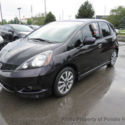 5dr Hatchback Manual Sport Low Miles 4 dr Sedan Manual Gasoline 1.5L 4 Cyl PURPL
5dr Hatchback Manual Sport Low Miles 4 dr Sedan Manual Gasoline 1.5L 4 Cyl PURPL
Mileage: 53,505
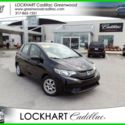 2015 LX Used 1.5L I4 16V Manual FWD Hatchback
2015 LX Used 1.5L I4 16V Manual FWD Hatchback
Mileage: 25,028
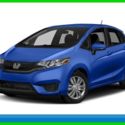 2017 LX Manual New 1.5L I4 16V N/A Hatchback
2017 LX Manual New 1.5L I4 16V N/A Hatchback
 2017 EX Manual New 1.5L I4 16V N/A Hatchback
2017 EX Manual New 1.5L I4 16V N/A Hatchback
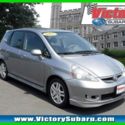 2007 Sport Used 1.5L I4 16V Manual FWD Hatchback
2007 Sport Used 1.5L I4 16V Manual FWD Hatchback
Mileage: 111,881
 2010 5-Speed MT Used 1.5L I4 16V Manual FWD Hatchback
2010 5-Speed MT Used 1.5L I4 16V Manual FWD Hatchback
Mileage: 161,357
 2017 LX Manual New Turbo 1.5L I4 16V N/A Hatchback
2017 LX Manual New Turbo 1.5L I4 16V N/A Hatchback
Mileage: 2
 Honda Civic Hatchback Manual 2Door
Honda Civic Hatchback Manual 2Door
Mileage: 151,000
 2000 Honda Civic Hatchback EK 5 speed Manual CLEAN
2000 Honda Civic Hatchback EK 5 speed Manual CLEAN
Mileage: 168,800
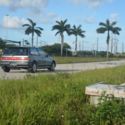 JDM Right Hand Drive RHD 1988 Honda Civic EF Hatchback MANUAL
JDM Right Hand Drive RHD 1988 Honda Civic EF Hatchback MANUAL
Mileage: 35,395
